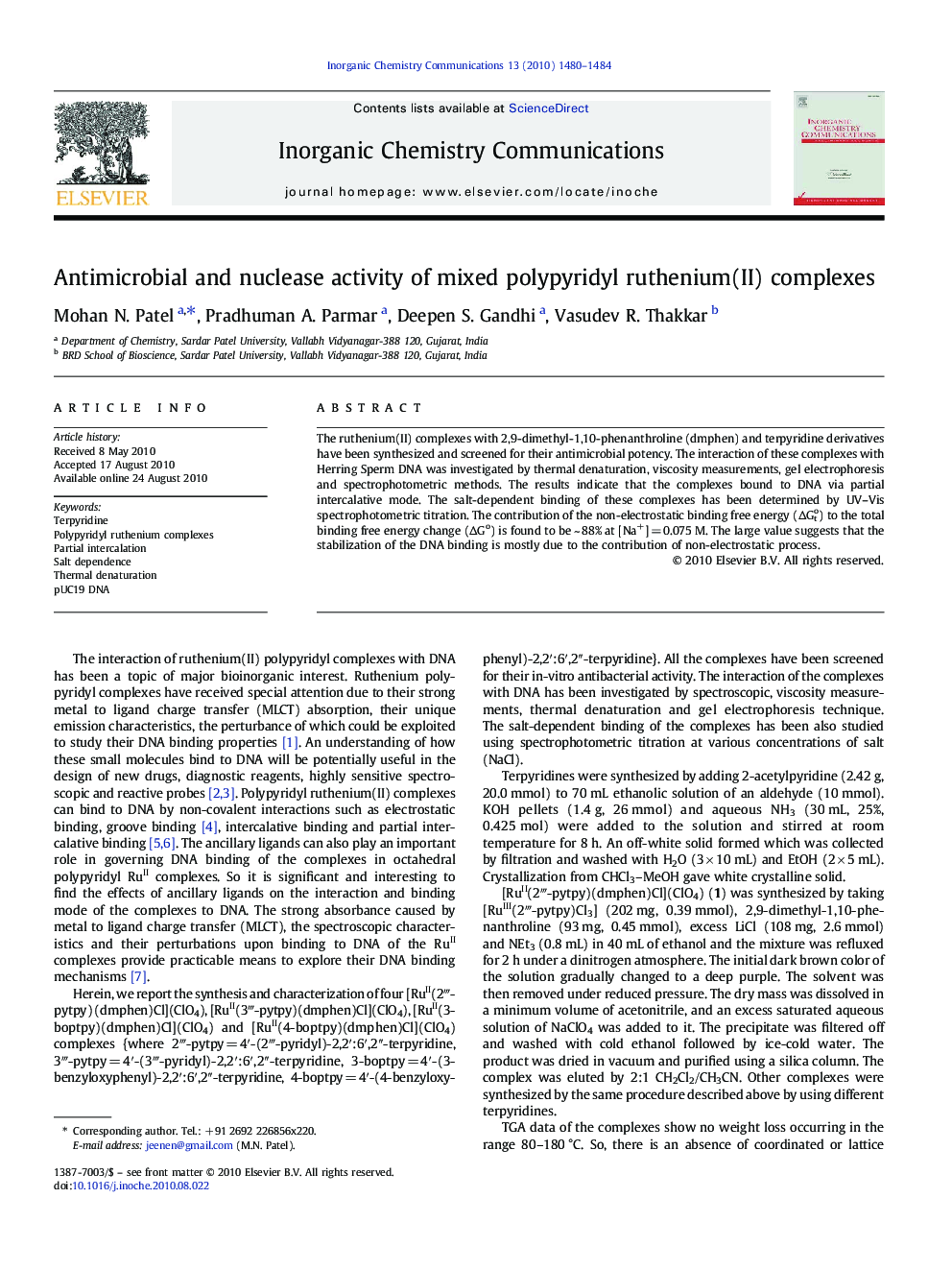| Article ID | Journal | Published Year | Pages | File Type |
|---|---|---|---|---|
| 1305942 | Inorganic Chemistry Communications | 2010 | 5 Pages |
The ruthenium(II) complexes with 2,9-dimethyl-1,10-phenanthroline (dmphen) and terpyridine derivatives have been synthesized and screened for their antimicrobial potency. The interaction of these complexes with Herring Sperm DNA was investigated by thermal denaturation, viscosity measurements, gel electrophoresis and spectrophotometric methods. The results indicate that the complexes bound to DNA via partial intercalative mode. The salt-dependent binding of these complexes has been determined by UV–Vis spectrophotometric titration. The contribution of the non-electrostatic binding free energy (ΔGto) to the total binding free energy change (ΔGo) is found to be ~ 88% at [Na+] = 0.075 M. The large value suggests that the stabilization of the DNA binding is mostly due to the contribution of non-electrostatic process.
Graphical AbstractSynthesized polypyridyl ruthenium(II) complexes partially intercalate to Herring Sperm DNA and cleave pUC19 DNA from SC form to OC and L id="ins33" orig="form";forms.Figure optionsDownload full-size imageDownload as PowerPoint slide
